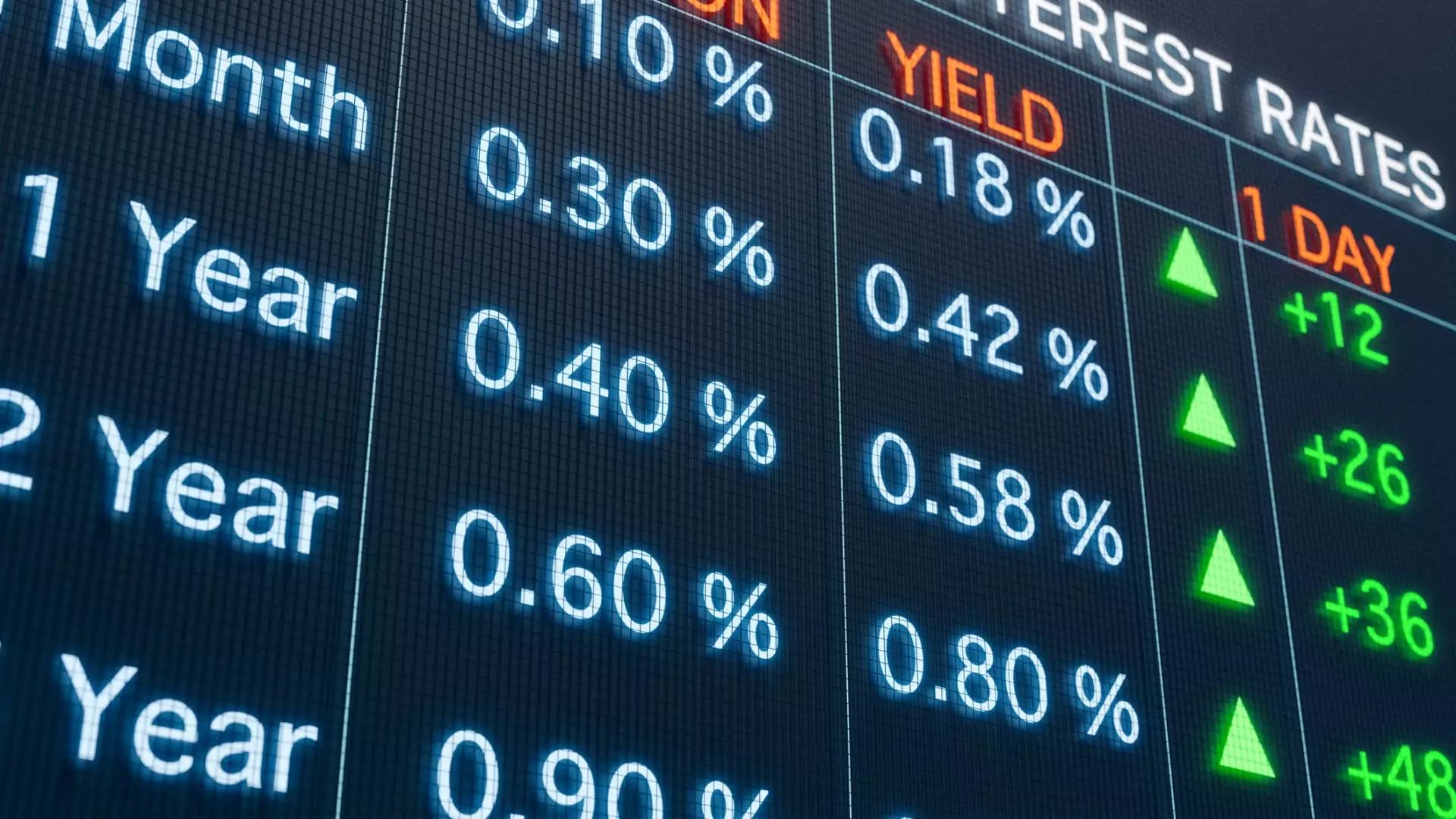This week’s unexpected surge in long-term Treasury yields shatters the narrative of a stable economic recovery driven by the Federal Reserve’s recent interest rate cuts. Despite the Fed’s attempt to signal easing monetary policy by lowering rates, bond investors displayed a deep skepticism, flocking to sell long-dated bonds and pushing yields to levels unseen since last year. This dissonance exposes a harsh reality—the market’s trust in the Fed’s finesse is fragile at best. It vividly highlights the disconnect between central bank signaling and investor sentiment, revealing an underlying anxiety about the true strength of the economy.
Far from a simple reaction to monetary policy, this movement underscores a broader truth: that financial markets are increasingly driven by fear of inflation reaccelerating and economic stability slipping away. The bond market’s behavior demonstrates that investors aren’t persuaded by the Fed’s easing signals; they see a more complicated and potentially perilous landscape. Yields moving upward—particularly on the 10- and 30-year notes—are not just numbers, but echoes of doubt. They suggest the market is bracing for harder times, setting a stage where central bank moves are no longer perceived as Guarantees of economic comfort, but as mere short-term illusions.
The Fragile Myth of Central Bank Control
The Fed’s decision to cut interest rates this week was heralded as a sign of confidence in ongoing economic resilience. Yet, beneath this veneer, a different story is unfolding. The increase in long-term yields indicates that traders are betting that the economy’s trajectory might not be as smooth as policymakers claim. Bond traders, traditionally cautious and data-driven, appear to be raising alarm bells—sending a clear message that the central bank’s effort to stimulate growth may risk fueling inflation, or worse, igniting instability.
This situation exposes a dangerous myth: that the Fed’s monetary policy can alone steer the economy clear of turbulence. Rate cuts, while helpful in theory, often have unintended consequences. When yields on long-term bonds rise following a rate cut, it’s a sign that financial markets are questioning the efficacy or sincerity of those moves. This disconnect between policy intentions and market reactions paints a stark picture—one where central banks may be overestimating their control, and investors are increasingly skeptical about the narrative of stable growth. The market’s behavior acts as a warning flag: that easing too much, or prematurely, could backfire, leading us to a place where inflation remains stubbornly high and growth stagnates.
Why a Rise in Yields Isn’t Just Economics—It’s a Warning Sign
The increase in longer-term yields is more than just market volatility; it’s an ominous signal of economic vulnerability. When the market sells off long-term bonds, driving yields higher, it suggests that investors are preparing for a future where inflation persists or possibly worsens, and the economy faces headwinds that threaten the fragile job market. This week’s movement was notably linked to comments from Fed officials, including Jerome Powell, painting the picture of a cautious, sometimes contradictory approach to inflation and employment.
Interest rates on mortgages and auto loans follow the same trajectory, often lagging but eventually reflecting these bond market signals. The rise in mortgage rates after the Fed’s rate cut is a prime example—it directly affects consumers’ ability to purchase homes, thereby imperiling the real estate market’s shaky recovery. The weak guidance from major builders like Lennar further emphasizes how tighter borrowing conditions are weighing on housing, a critical component of economic health. Lower bond yields had previously signaled optimism; now, the rising yields signal a shift towards concern, or even foreboding.
International Ripples and Domestic Uncertainties
Adding to the complexity is the global arena, where international bond markets are experiencing similar shifts. As foreign central banks grapple with their own inflation challenges and economic uncertainties, international yields are trending upwards alongside U.S. rates. This interconnectedness complicates the narrative: global economic conditions do not operate in isolation but influence domestic financial health and policy decisions.
Despite this, some experts warn that the rebound in long-term yields could hinder any real progress toward a soft landing. Rising yields may inadvertently entrench a period of stagnation; they increase borrowing costs, dampen investment, and risk tipping the economy into a recession that was previously unanticipated. The bond market’s recent movements also reflect an unsettling truth: that the inflationary pressures the Fed fears might still be persistent, making the pursuit of easy monetary policy a dangerous game of chicken with economic stability.
Debt and housing markets are particularly vulnerable in this environment. Elevated bond yields mean higher borrowing costs, which corporations, governments, and consumers will have to bear. The faith that the Fed’s rate cuts would bolster growth is now being challenged—market signals reveal a more cautious, and arguably bleaker, outlook. If the bond market’s warning signals are to be believed, we’re not on the cusp of a sustainable recovery, but rather on the verge of a fiscal and economic reckoning that policymakers desperately want to ignore.

